Last Chance to Catch NYC's Holiday Notalgia Train
We met the voices of the NYC subway on our nostalgia ride this weekend!

The landmarked gem at 215 West 57th St., which houses The Art Students League, is teeming with creative life inside!

The American Fine Arts Society building, home to the Art Students League, is a landmarked gem at 215 West 57th Street, its front doors swinging open at frequent and regular intervals, offering a glimpse of the teeming creative life that still hums inside. From its founding in 1875, the Art Students League has sought to explore and express ideas outside the artistic norms of the time, particularly the concepts emerging from the avant-garde movements in Paris and Munich.
Jackson Pollock, Georgia O’Keeffe, Robert Rauschenberg, and Robert Smithson are just a few of the notable artists who were once students at the Arts Students League. The 1966 Landmarks Designation Report describes the society’s illustrious heritage glowingly: “The roster of former League students, members, and instructors…reads like a Who’s Who in American Art. The School has had a tremendous influence on art in this country. The membership lists are studded with names of the famous, representing every idiom of the arts.”

Tuesday, May 20th at 4pm ET: Celebrate the 150th anniversary of the League by exploring a showcase of works from its renowned students and teachers.
⭐ This free tour is open exclusively to Untapped New York Members at the Insider tier or higher!
Today, over 5000 students a year take a wide range of affordable art classes at the League under the direction of world-class artists and teachers. We recently took a tour to learn more about the organization’s history and the secrets of its building on 57th Street.

The Art Students League's home at 215 W. 57th Street was designed by prolific architect Henry J. Hardenbergh, known in New York City for designing the Dakota Apartments, the first Waldorf hotel, the Plaza Hotel, and more. A landmarked historic district on the Upper East Side, the Hardenbergh/Rhinelander Historic District, bears his name and is one of the smallest historic districts in Manhattan.

Wednesday, June 25th at 5pm ET: Go inside the renowned art school and visit active classrooms and workshops where America's greatest artists studied and taught!
⭐ This free tour is open exclusively to Untapped New York Members at the Insider tier or higher!
The French Renaissance-inspired building combines an ornamented façade with a balanced (and nearly symmetrical) architectural design. It was built at a cost of $400,000, which would be equivalent to around $9 million in 2017 dollars, when adjusted for inflation. An article in the New Outlook contends that within the new building, “it may be pretty safely predicted the artistic spirit of New York will henceforth find its chief theatre.”
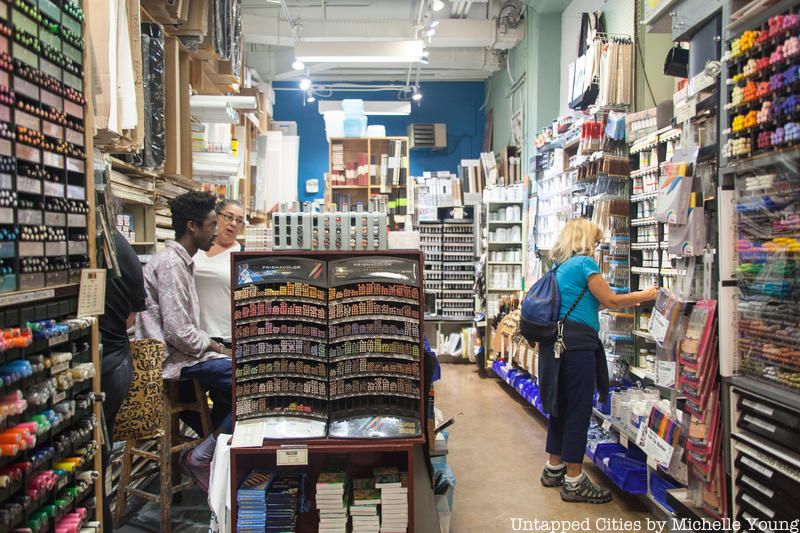
On the first floor of the Art Students League building is a tiny but well-stocked art supply store, a true hidden gem known primarily just to students and art insiders. There is no sign on the outside of the building to denote its existence. But despite its small footprint, the store is wildly successful. According to Ken Park, the former Director of Communications and Institutional Fundraising, “Art supply reps tell us that the League’s Art Supply Store sells more products per square foot than any other store they know. We carry more than a thousand kinds and colors of professional grade paint.”
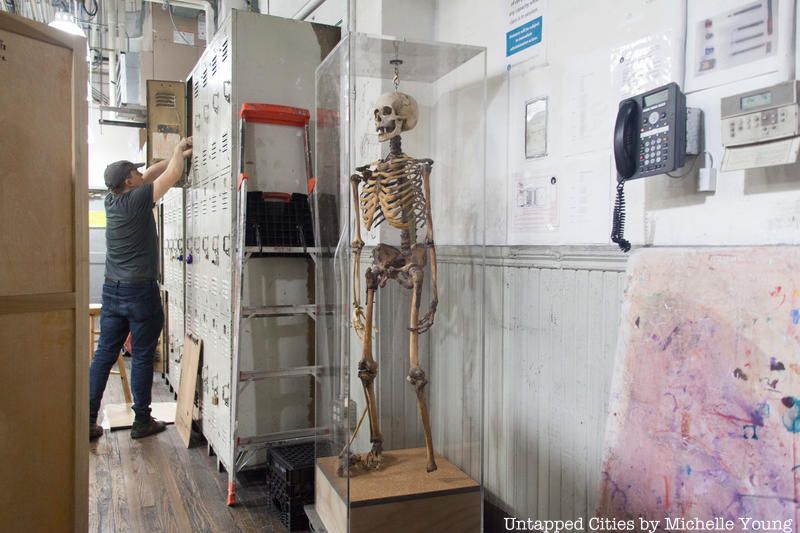
There are several skeletons scattered through the Arts Students League building, available for observation and drawing. But a very special one is on the second floor, the skeleton of Mafalda Brasile Hicks, a former student of the League who died in March 2010. Before her death, Hicks expressed a desire to serve as a model for future classes and her family donated her skeleton to the Art Students League, the first-ever type of bequest to the school.
Hicks herself had a fascinating history – she was born in Newark, New Jersey and was a talented singer since she was a child, performing on live radio. She studied visual art at Newark School of Fine and Industrial Arts and served in the Marine Corps during World War II, based in North Carolina where, according to an article in the Art Students League’s in-house magazine, she applied her talents “drawing maps and developing visual training aids. She also sang with the big band orchestras, entertaining military troops.” She took classes at the Arts Students League after the war.
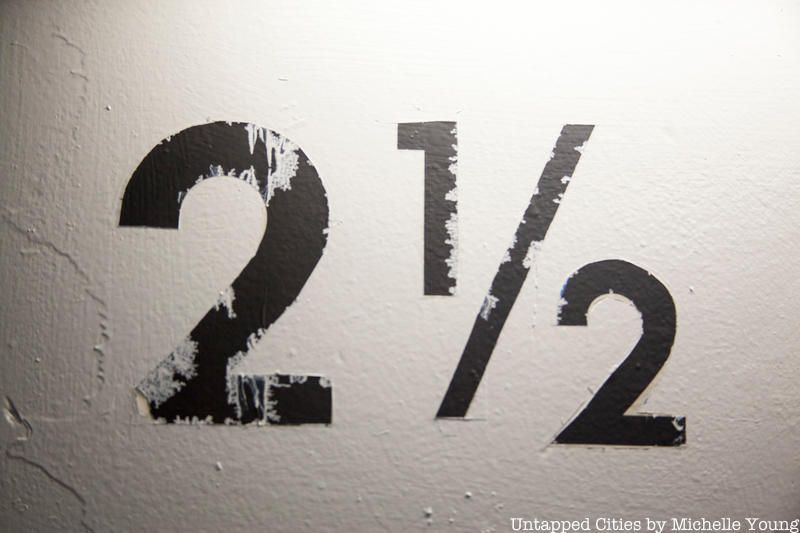
Half floors are one of our favorite things in old buildings – the Metropolitan Museum has some curious ones, and the Art Students League building has two half floors – Floor 2 ½, which hosts the library, and Floor 4 ½, which serves as storage. You can access the 2 ½ floor library through the stairwell or view it through an elevated window from the exhibition gallery.
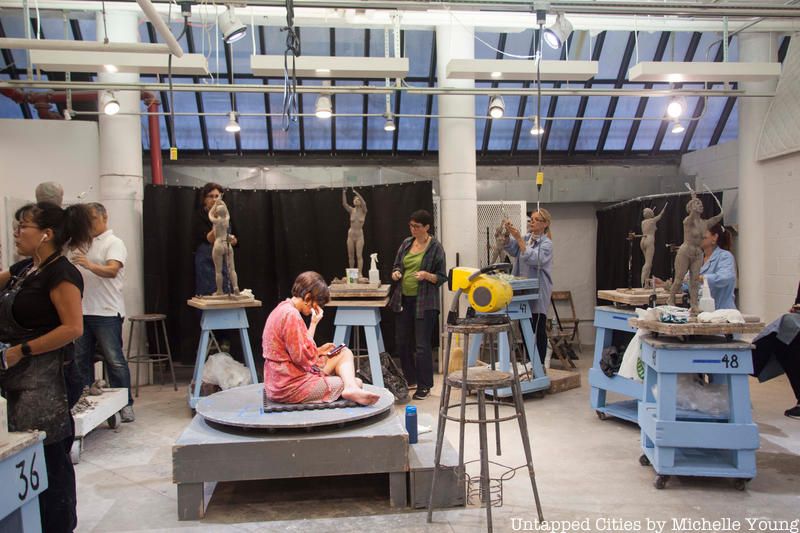
On June 2nd, 1875, the Arts Students League was founded by a group of students and instructor Lemeul Wilmarth, who were dissatisfied with the traditional teaching at the National Academy of Design. The all-volunteer organization rented a single 20×30-foot room in the mansard roof of 108 Fifth Avenue, a four-floor building at the corner of 16th Street, to hold life drawing classes modeled on the practices of a Parisian atelier with natural light flowing in from the skylights above.
The students paid a tuition of $5 a month, but also volunteered to do organizational and maintenance tasks. A Board of Control was founded to govern the new organization. Within two years, the curriculum was expanded to include portraiture, sketch classes, composition classes, as well as lectures on anatomy and perspective. The Arts Students League would move to 38 West 14th Street between Fifth and Sixth avenues in 1882, to 143-147 East 23rd Street in 1887, and finally to its current home at 215 W 57th Street in 1892. Many of the studios today still have large windows to allow in light, such as the clay studio above.
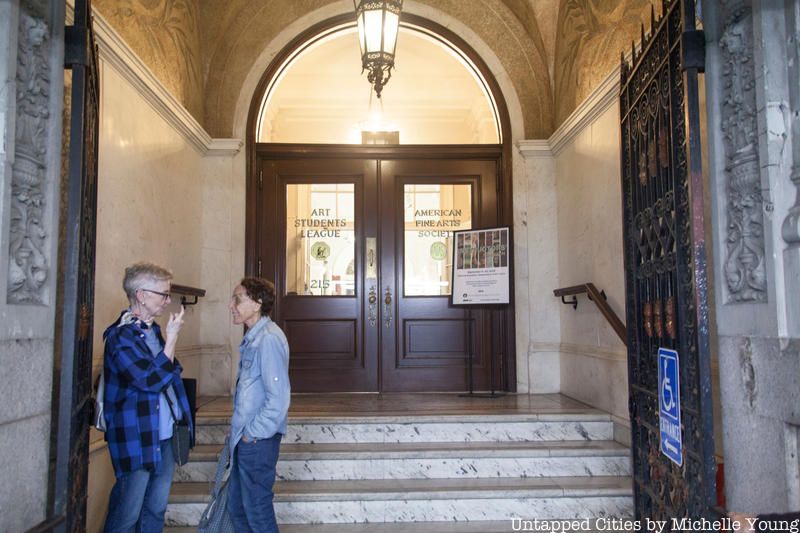
The American Fine Arts Society was incorporated in 1889, an initiative of Howard Russell Butler, a Princeton and Columbia Law School graduate. Butler had a vision to construct a building that would combine New York City’s new art societies and offer space for publicly accessible exhibition galleries. Butler raised funds for the building by creating a stock corporation, and in the process met Andrew Carnegie who hired him, while allowing him to spend part of each work day to paint.
The Arts Students League is one of three constituent organizations that founded the American Fine Arts Society, which also included The Architectural League of New York and the Society of American Artists. The 57th Street building soon became the locus point for art in New York City, and the Landmarks Designation Report contends that “practically all major fine arts exhibitions were held in the American Fine Arts Society’s galleries until 1941.” The three organizations would share the 57th Street building until 1941 when the Society of American Artists merged with the National Academy of Design and moved to its own building.
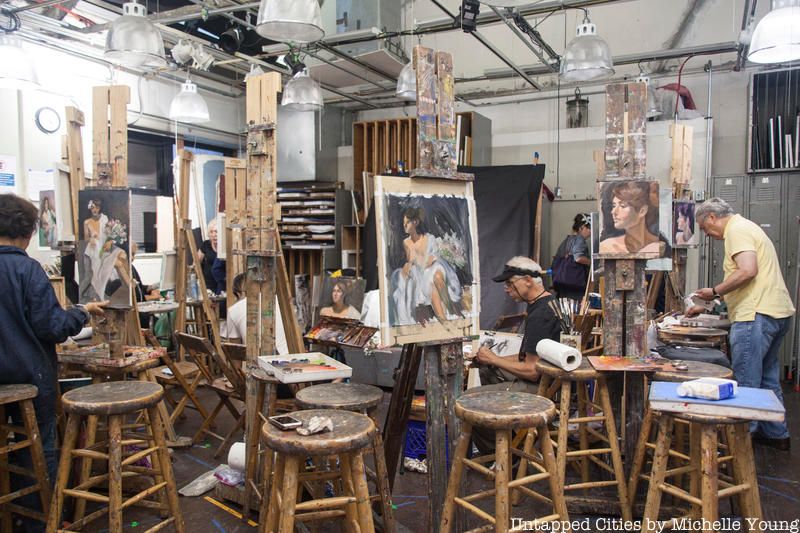
Today, the Arts Students League offers 100 studio classes in drawing, painting, sculpture, printmaking, welding and assemblage. Most classes work with a live model, maintaining the atelier tradition—the impetus of the League’s founding – where a master artist works alongside students There’s a welding studio, woodworking studio, and bronze-making studio (although the bronze is poured off-site),
Affordability remains an important aspect of the school’s mission—with classes ranging from $120 to $400 a month. The classes are by subject, with students across a range of skill levels. In 1879, work-study scholarships were established for students who could not afford the tuition, and financial aid continues to be available today through not only work-study but also merit based scholarships and grants.
There are also travel workshops to international destinations, along with short workshops held in New York City on specific themes.
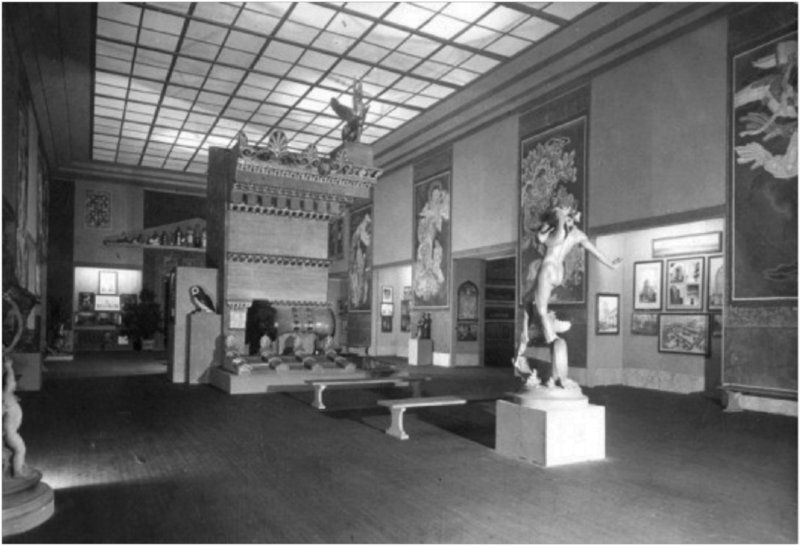 The Vanderbilt Galleries. Photo courtesy of the Arts Students League
The Vanderbilt Galleries. Photo courtesy of the Arts Students League
In 1893, a large exhibition in the American Fine Arts Galleries included an impressive array of European art from private collections, including work by Rembrandt, Diego Velásquez, J.M.W. Turner, John Constable, and Thomas Gainsborough. George Washington Vanderbilt II, son of William Henry Vanderbilt who would build the Biltmore estate in Asheville, North Carolina, gifted the American Fine Arts Society $100,000 to build new galleries. The connecting column-free gallery, built on West 58th Street, is known as the Vanderbilt Gallery and was modeled on the Galeries Georges Petit in Paris, particularly the inclusion of a 26-foot skylight ceiling.
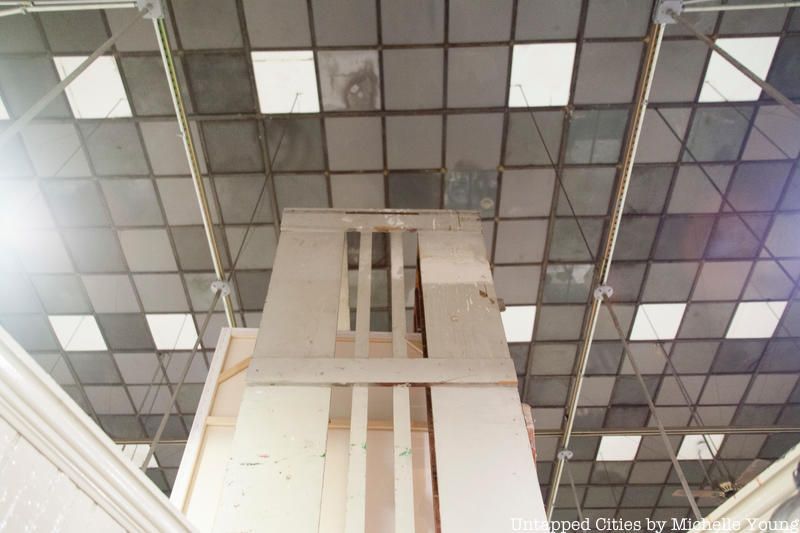 The ceiling of the former Vanderbilt Galleries today
The ceiling of the former Vanderbilt Galleries today
A fire destroyed the galleries in the 1920s, but they were rebuilt. Since the end of World War II, the space has been used as a bifurcated studio space, converted to accommodate the sudden surge in students at the League supported by the G.I. Bill. The exhibition gallery today is located on the second floor of the building, in a light-filled room that was originally used as a dining hall and lecture hall. Fun fact: an original oak and pink marble mantel sits in a storage area behind one of the exhibition walls.
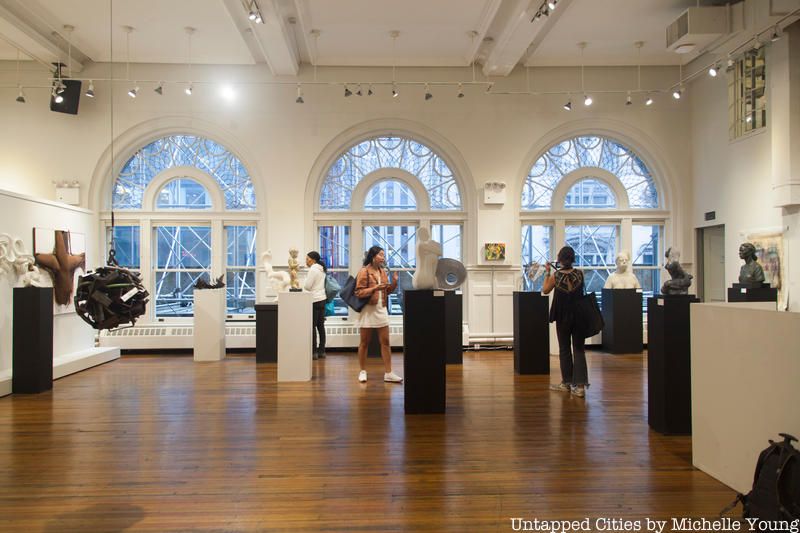 The current exhibition gallery, with window to the 2 ½ library on upper right
The current exhibition gallery, with window to the 2 ½ library on upper right
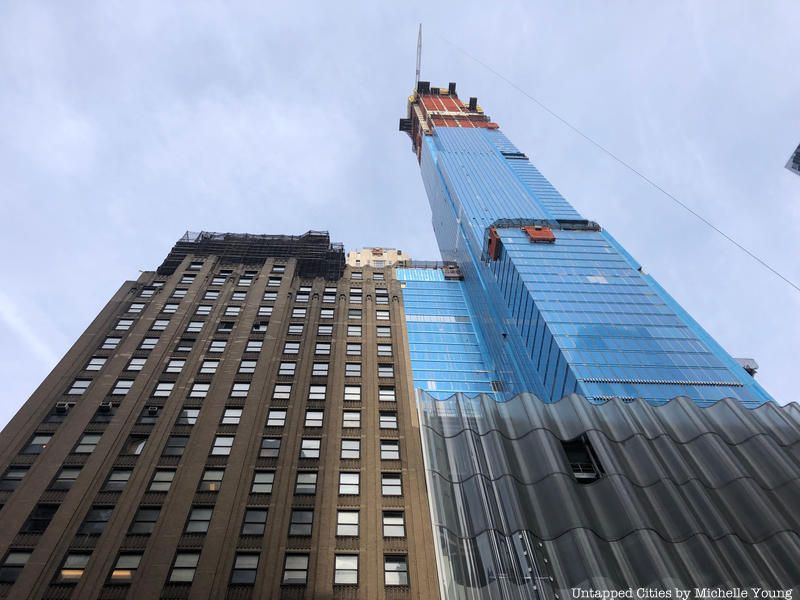
The Central Park Tower, a supertall high-rise developed by Extell, is the second tallest building in the United States (after 1 World Trade Center) and the tallest residential skyscraper in the country, at a height of 1,550 feet. The ground floor hosts Nordstrom’s New York City flagship store and about 12 floors above the Art Students League building, a cantilevered portion of the skyscraper hangs over the historic landmark, thanks to air rights purchased from the League.
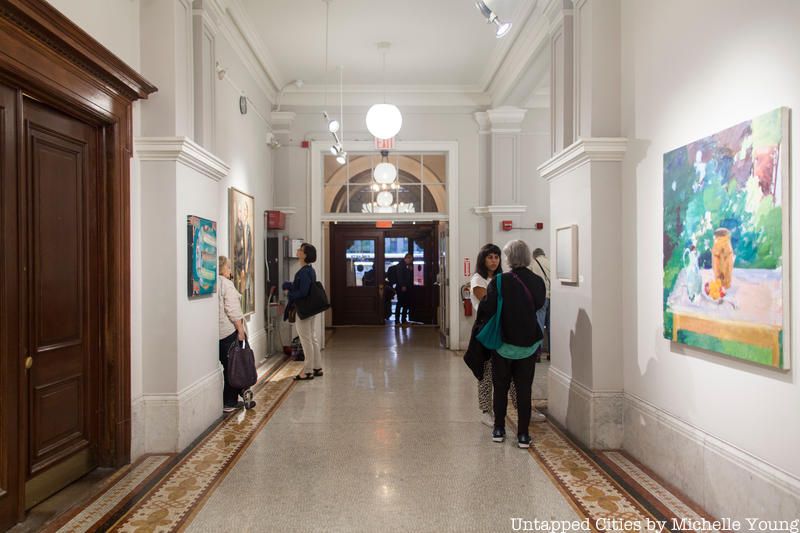
The famous artists who were students at the Arts Students League include Jackson Pollack, Mark Rothko, Norman Rockwell, Alexander Calder, Georgia O’Keefe, cartoonist, Al Hirschfeld, Robert Rauschenberg, Joseph Stella, John Marin, Donald Judd, Robert Smithson, Jacob Lawrence, and James Montgomery Flagg. Notable instructors have included Thomas Hart Benton, John Sloan, Max Weber, George Bellows, Daniel Chester French, William Merritt Chase, Thomas Eakins, and Augustus Saint-Gaudens.
Each fall, the lobby and second floor gallery of the Arts Students League are host to the annual Instructors’ Exhibition, a presentation of work by current instructors. The tradition, which launches the fall exhibition season each year, goes back to the 19th century.
Next, check out 17 Gilded Age Mansions of Millionaire’s Row on 5th Avenue.
Originally published in 2015, updated May 2025.
Subscribe to our newsletter